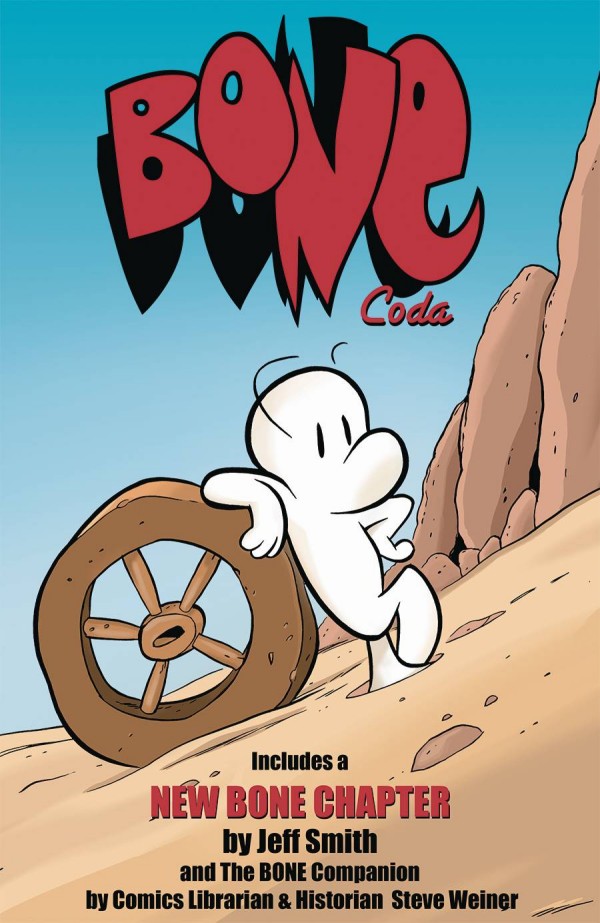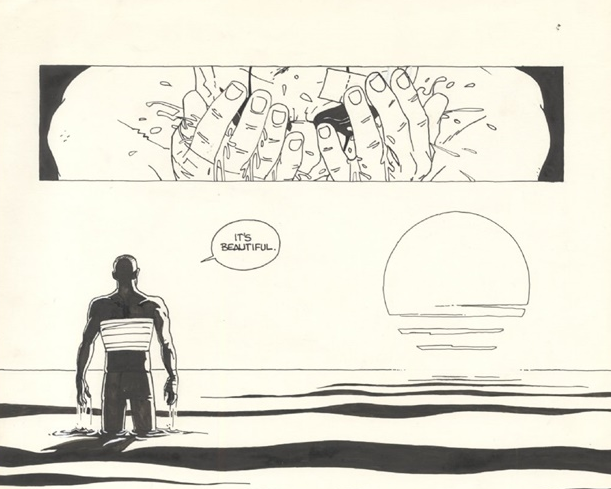 Written by Mike Mignola and Christopher Golden
Written by Mike Mignola and Christopher GoldenIllustrated by Ben Stenbeck
Dark Horse
In the waning days of the Great War, a plague has overtaken Europe, putting the petty affairs of government on the back burner while communities struggle to survive. Making matters worse, other evils seem to have come out of the woodwork to threaten humanity's tenuous hold on the earth. Vampires lurk on the corner every night, waiting to victimize any foolish enough to show their faces.
It is a world of terror and horror, and only one man, Lord Henry Baltimore, may be able to stop it. Chased by personal demons far worse than those around him in the real world, Baltimore is on a quest to kill the vampire he holds responsible for everything. Can he manage it, with the help of a young girl seeking a better life? Or will the ghoulish remains of the original war take his life and place Baltimore in a watery grave? Before he can kill the vampire, Baltimore must face the terror of the Plague Ship.
Long-time readers of Panel Patter know that I am a big fan of Mike Mignola and Dark Horse's horror comics, so this book was an easy match for me. After almost twenty years of working with Hellboy and other stories, Mignola has a strong feel for how to balance story with suspense and time out his climactic scenes to get just the right amount of drama from them. That's definitely the case here, as Baltimore's action rises and falls like the tide around him for much of the book. Though obviously part of a longer story, volume one feels complete in and of itself. While it leaves a reader wanting more, which is always a good thing, Mignola and Golden are careful not to leave things too open ended. You can read Volume One and feel secure in the knowledge that you have finished one chronicle in a longer journey, not just part one of an epic. I tend to get a bit frustrated when longer series don't make it possible to enjoy the work in sections, so I greatly appreciate the way Baltimore is set up. I hope the future volumes carry on in this way.
Baltimore's story does echo with some familiar tones to those who are fans of the horror genre. There's the need for world-building, of course, and because we started in the middle, a slightly contrived scene is created so that Lord Baltimore can tell his origin. However, Mignola and Golden did a good job here of making a main character who doesn't fit the traditional vampire hunter mold. I really like the idea that Baltimore is set up to be an agent of Heaven, but it is not something he embraces. This is a key difference from most of these stories. Baltimore is not on a quest to save the world--he just wants to kill the monster that ruined his life. While I am sure that things will be far more complicated than this, it's a great take on the idea. At some point Baltimore will find he cannot escape his fate, and how he reacts to that knowledge will definitely drive the story into directions that will either break Baltimore or save his soul. Knowing Mignola, it could go either way.
Without giving away too much of the plot, I also liked how Baltimore is not set up as a character we are supposed to like and relate to. He is a hard man whose own decisions might have led him down this path. (You can be the judge of that when you read the book. I have my own ideas, but to speak of them would completely spoil the story.) As a result, he is not met with aid and comfort within this world, making his quest all the harder. To know the story of Lord Baltimore is to recoil in horror, to have nightmares, and to pray it never happens to you. That's the key to a good modern horror story, and the Mignola-Golden team nails it from beginning to end.
Ben Stenbeck's art does a good job of contributing to the creepy, depressing feel of the narrative in Baltimore. He's definitely inspired by the work of Mignola, but doesn't slavishly copy it. Stenbeck relies less on use of black space than Mignola, for instance, and while both have a very similar basic style, Stenbeck's characters are not quite as crisp. I like his monster designs, especially for the undead soldiers that come towards the end and make for a great climactic battle scene, and the sketchbook at the end shows how hard he worked on putting them together. It's easy for me to tell that we are in the time period of World War I, and yet I also got the impression that things had changed, which is a tricky balance that Stenbeck handles well. My only quibble with Stenbeck is his penchant for drawing his characters with blank faces. Every time we got to one of those heads that lacked even basic features, I was thrown out of the story just a bit. If there's one thing I would change in Baltimore, it would be for Stenbeck to define his characters more or use less distant shots to avoid the empty faces.
Baltimore Volume 1: The Plague Ships is a great addition to Dark Horse's horror comics line. It's a desperate world with no clear winners and seemingly insurmountable odds for the protagonist. The plotting is excellent and the story blends familiar horror tropes with new takes on typical ideas. I definitely want to read more, and I'm sure any fan of horror comics or Mike Mignola will feel the same way after reading it. You can check out a short preview from here. My guess is you'll be out to your comic book store to find the rest.
NOTE: Dark Horse was kind enough to provide a digital copy for me to review.







